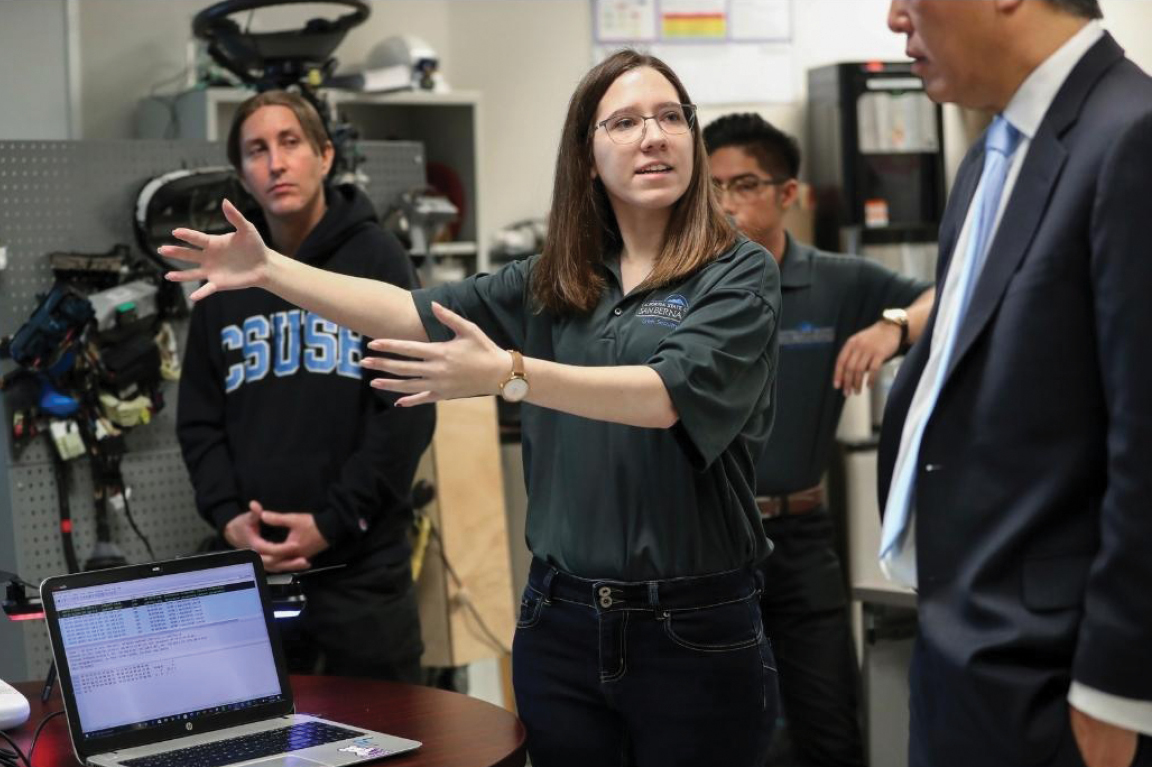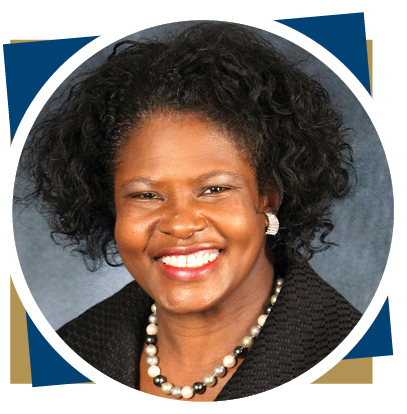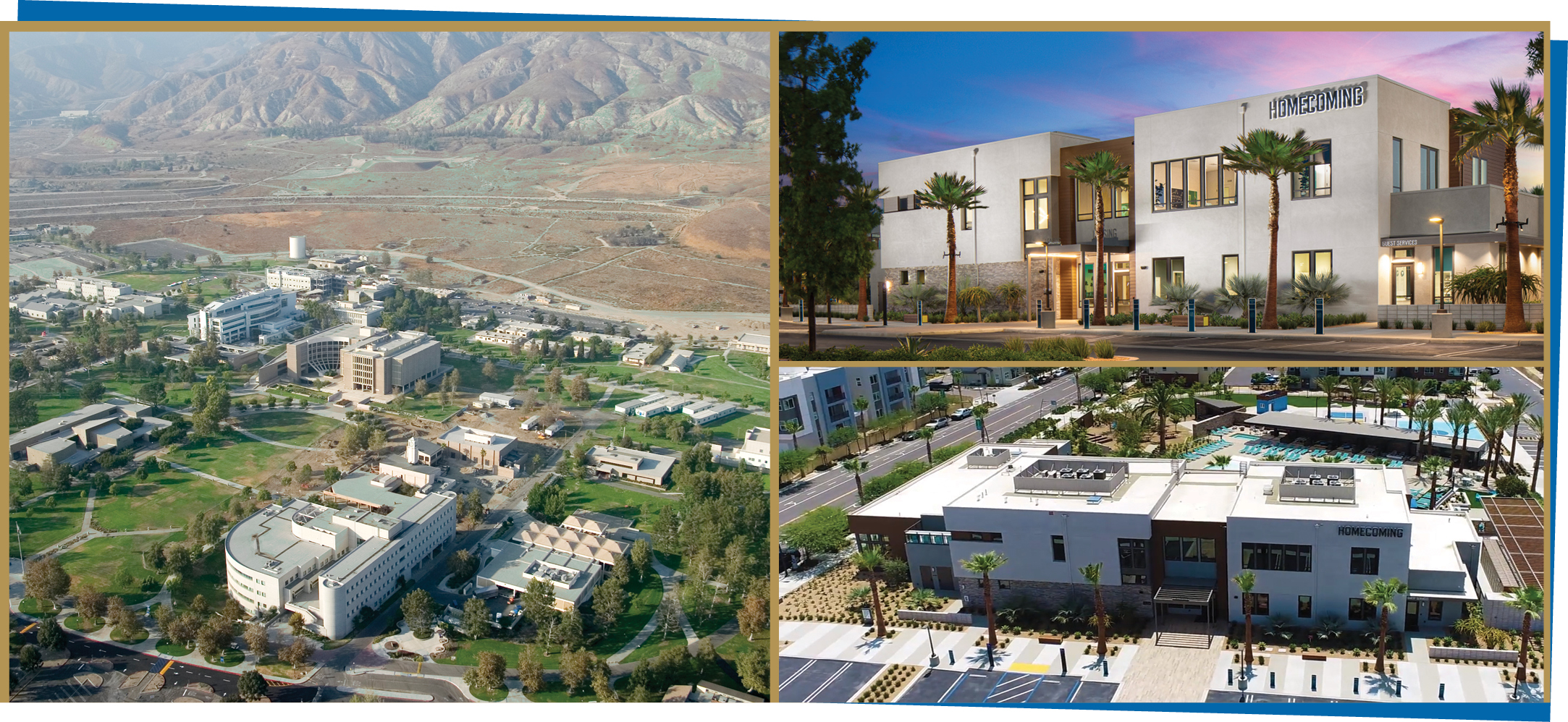Think California is too expensive? Imagine this: a place, just an hour’s drive from Los Angeles, where a young adult can earn a college degree, get a high-paying job, and then buy a house in a quality neighborhood.
If that sounds too good to be true, you haven’t talked to the right people. We did, and here, in a nutshell, is what’s being built: a place where a bright, young student can graduate from high school, enroll at California State University-San Bernardino, major in cybersecurity, and then graduate with a skill set that is in high demand. In less than a year, this Gen Z’er can make $100,000 and purchase a nice home for $439,000 in a desirable community anywhere from Victorville to Ontario. And the clincher? The typical daily commute takes 12 minutes, which is like free cash to anyone battling inflation.
Guess how many places in America offer this kind of opportunity. Very few, which is why an increasing number of corporate executives and site selectors are taking a closer look at San Bernardino County in Southern California.
About 60 miles east of LA, an ecosystem of business development flourishes in America’s largest county by land mass because people at every level of government and industry want it. From higher education and worker training to small business funding, affordable housing, modern infrastructure and quality-of-life investment, leaders in the public and private sectors in San Bernardino County are united by a common goal: building a better business climate.

Students at California State University-San Bernardino receive hands-on instruction in one of the top-rated cybersecurity programs in the nation.
Courtesy of CSUSB
In most places, talk like that sounds like a cliché. Here, it happens. Across this Inland Empire jurisdiction of 20,000 square miles, stretching from just east of Los Angeles County to the Arizona border and the Las Vegas suburbs, a network of pro-business leaders has banded together to create an environment where young people don’t have to move away from their hometown in order to thrive.
 When you go to sleep, chances are there is a CSUSB graduate who is making sure that you still have electricity, that you have gas in your car, and that your banking assets are safe.”
When you go to sleep, chances are there is a CSUSB graduate who is making sure that you still have electricity, that you have gas in your car, and that your banking assets are safe.”
— Tony Coulson, Executive Director, California State University–San Bernardino Cybersecurity Center
Some folks would call that an employer’s dream. Recently, we took the time to get to know these ecosystem builders better. Here are their stories.
The Cybersecurity Expert
Tony Coulson, executive director of the California State University-San Bernardino Cybersecurity Center, oversees a center that helps provide workforce training programs for companies in the region and beyond. He’s seen student enrollment in the program grow from 19 to more than 600.
During his time at CSUSB, Coulson has led more than 20 grant-funded cybersecurity projects totaling over $18 million. He led the establishment of a nationally acclaimed cybersecurity program that spans business, computer science, national security studies, criminal justice, and public administration. The program is designated as a Center of Academic Excellence in Cyber Defense Education by the National Security Agency and Department of Homeland Security.
“The cybersecurity program at California State University-San Bernardino consists of seven different degrees,” he says. “We focus on a variety of disciplines, not just technical. It involves criminal justice, intelligence, business, government, etc. That suits our region well. We run www.CAEcommunity.org — for almost 400 colleges nationally that meet stringent national standards on cybersecurity.”
Coulson stresses that industry shapes the curriculum. “We listen to what the employers want, but also to what they think they will want,” he says. “We learn what the up-and-coming is. I have to prepare students for jobs that exist four years from now. In worker placement, we are starting a Workforce Tech Hub where students can do remote work on campus. Sometimes they have to choose between doing their university work or doing their job. If they don’t have what they need at home, we set up a spot where students can work on campus.”
Success stories abound, says Coulson. “Our students have gone on to work at the highest levels of government. When you go to sleep, chances are there is a CSUSB graduate who is making sure that you still have electricity, that you have gas in your car, and that your banking assets are safe. Somebody at CSUSB is watching over you and the things you value.”
There are over 700,000 open cybersecurity jobs
in the U.S. today. CSUSB has a 100% placement rate
for its graduates.
Source: CSUSB
Coulson says he’s not done building the program, adding, “I expect the program to grow as we diversify cyber skills. I would like to see cyber in health care as one of our disciplines. We are one of the largest programs on campus. We are part of the elite Centers of Academic Excellence per the National Security Agency, and somebody from the Department of Homeland Security called us the No. 2 program in the nation. We work with Carnegie-Mellon University, Purdue, Cal-Berkeley, and many community colleges. We are asked to provide advice to many schools.”
The Neighborhood Builder
Randall Lewis is a principal and executive vice president with the Lewis Group of Companies, a real estate development firm that has built 60,000 houses across Southern California. “We now do large-scale master-planned communities,” he says.
They focus on building quality communities with the amenities sought by Millennials and Generation Z. “We are developing these types of communities in Chino, Rancho Cucamonga, Fontana, Ontario, and Rialto,” he says. “Half of them are in San Bernardino County. We also do apartments. We own about 12,000 apartments altogether.”

Randall Lewis, Principal & Executive Vice
President, The Lewis Group of Companies
The Lewis Group, which has 750 employees, owns more than 30 shopping centers and does industrial development too. “We are in Las Vegas and Reno, Nevada,” Lewis adds. “We are in about a dozen counties and 35 cities. We are very active in California and Nevada, so we are familiar with a lot of different styles of how governments run themselves.”
Lewis says they especially like what they see in San Bernardino County. “The county historically was a place where a lot of the development came because of the availability and the affordability,” he notes. “You would get off the freeway at a house you could afford back then. Starting in the 1970s and 1980s, a lot more happened here as LA and Orange counties got built out. The pressure was affordability. That brought a lot of the good things that come with economic development. Nordstrom came here in the 1980s. A lot of other stores started moving here. The residential growth came. This became a growing region. Banks did not want to miss out. It became a self-fulfilling cycle. One good thing led to another. That led to more employment, which led to more housing.”
Since the dawn of the millennium, the last 22 years “have been a story of the evolution of the county,” he adds. “It has been a time of growth for industrial logistics. It changed in the form of the kinds of housing that got built. Over the last two decades, it has evolved. We have been a big part of it. We are seeing a lot more diversity of product with luxury townhomes and condominiums. As executives moved here, it created demand for more upscale housing. The office market evolved too. This is not a large haven for corporate Fortune 500 headquarters, but a lot of divisional regional heads moved here.”
People no longer need to live in LA or Orange County to experience the good life, says Lewis. They can enjoy it in San Bernardino County. “This county contributes to the vitality of the region,” he says. “Loma Linda is a major research center. The Toyota Arena is in Ontario. The LA Kings played the San Jose Sharks there last night. This area has gone through an evolution. There are more large companies and startups here now. Whole Foods is here. Victoria Gardens shopping center is one of the nicest in the country. It is a destination where people come from all over to shop.”
He adds that “affordability is still an important factor. So is quality of life. People are attracted to San Bernardino County because it does not have a lot of the big city problems. The school system is good. Traffic compared to other counties is good. There is breathing room. If you want to go hiking or look at the mountains or visit a stream, you can do that here. The future is really bright for San Bernardino County.”
 “The most significant reason we are seeing increased investment today is affordability. ”
“The most significant reason we are seeing increased investment today is affordability. ”
— Hilda Kennedy, Founder, AmPac Business Capital
As a business leader, Lewis says he appreciates “the accessibility of the leaders of the county. If you are a businessperson, you want to know who the leaders are and how predictable they are. Investors look for predictability and land. We have both.”
The Small Business Investor
Hilda Kennedy is the founder of AmPac Business Capital in Ontario. AmPac was established in 2005 as a non-profit organization whose goal is to positively impact the region, state, and nation in economic development.
“We are a mission-based lender trying to help smaller businesses that cannot get traditional loans from banks,” says Kennedy. “We chose San Bernardino County because we live, work, play and worship here. We like the exciting growth potential for businesses in this region, especially with affordable commercial real estate and the many growing industries. Our goal is to create more jobs in this region.”
Kennedy says that “we have great success in assisting manufacturers, service-related businesses, and other businesses that are operating warehouses in the logistics space.”
It hasn’t always been easy. Kennedy says she remembers a time not long ago when Riverside and San Bernardino counties were the hardest hit in the country due to the Great Recession of 2008 and 2009. “These businesses have recovered,” she says. “The most significant reason we are seeing increased investment today is affordability. In California, San Bernardino County is more affordable to live and work in than our neighboring counties. The vacancy rates are limited and finding space is limited, but it is still more affordable to hang a shingle in San Bernardino County. There is a more business-friendly culture in the cities of this county. There is less of the NIMBY culture. There are intentional, strategic efforts to welcome businesses in these communities. For sure, that makes a difference.”
She’s also seeing the local business environment change with new entrepreneurs. “Trucking company entrepreneurs are coming out of the woodwork. They are growing and solving many of the area’s pain points. They must get product into the hands of people,” she says.
San Bernardino County welcomes such business builders because it “makes it easy to do business here. If people do not find it easy to work with people at the top, they will leave and go elsewhere. If the county starting with the Board of Supervisors keeps communicating that this is the place to do business, the other elements of the county will speak for themselves. We also have universities producing talent, so we have the people to fill those jobs.”

This Investment Profile was prepared under the auspices of San Bernardino County. For more information, contact the county’s Economic Development Department at 909-387-4700. On the web, go to www.SelectSBCounty.com.

